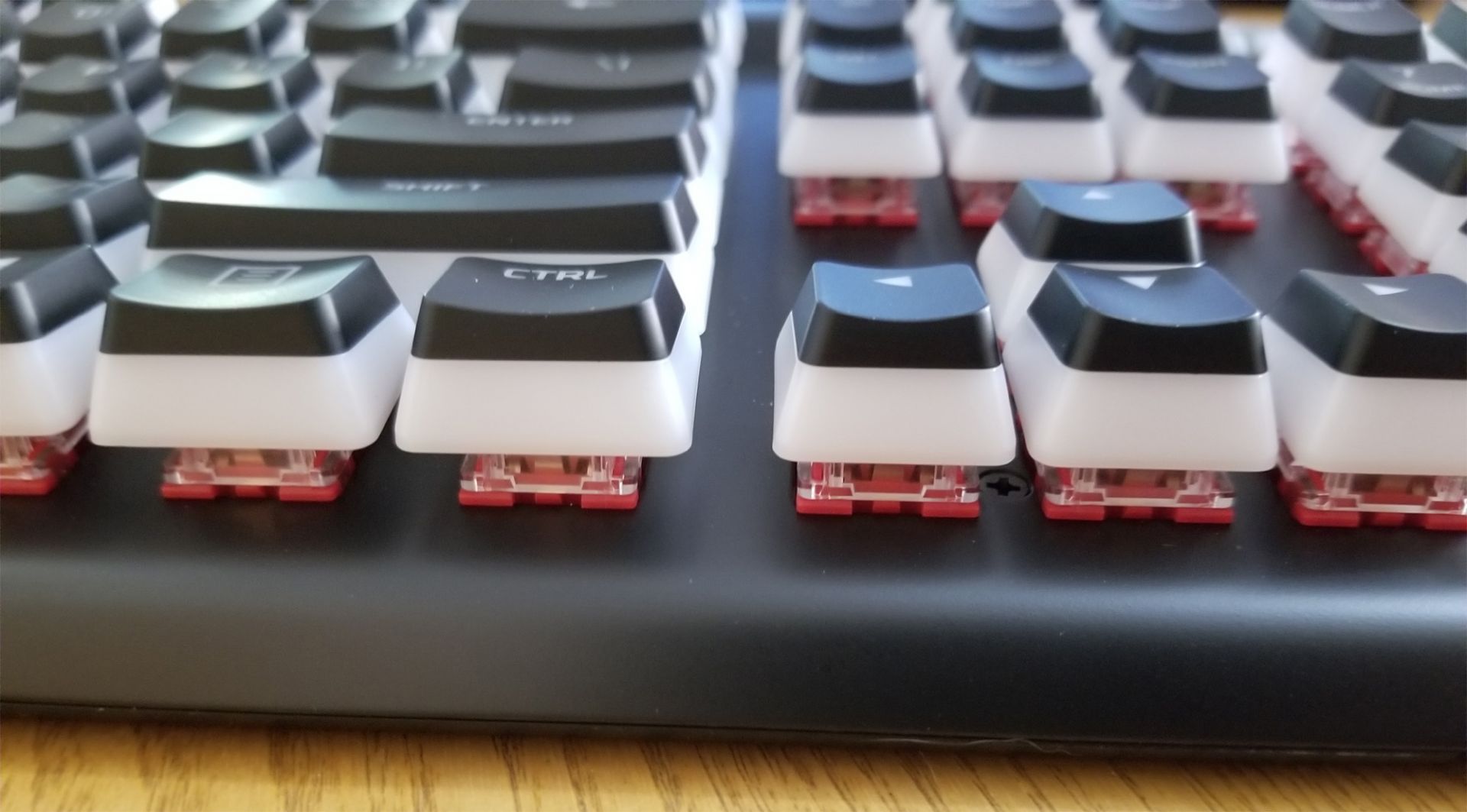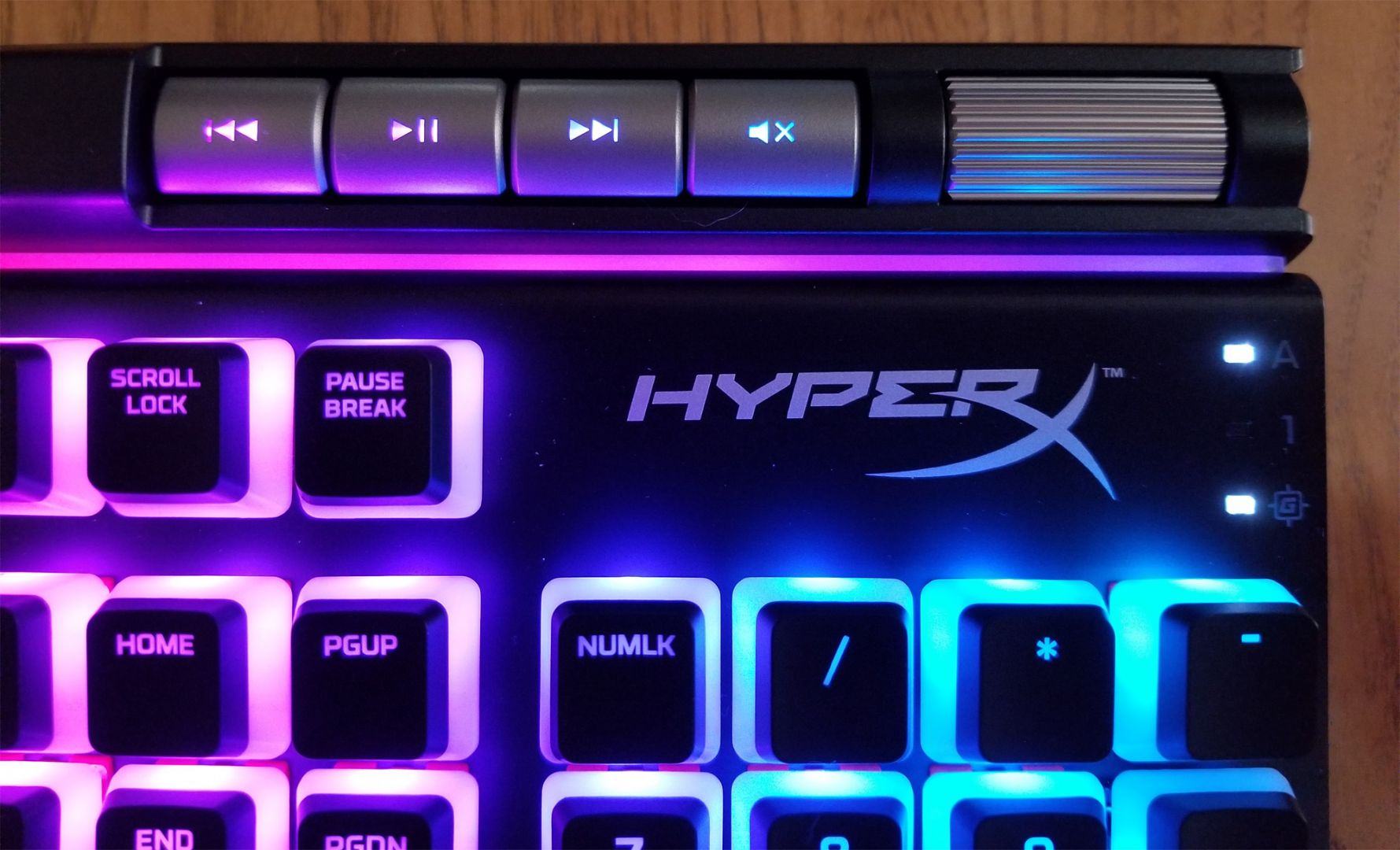

Almost exactly three years ago, I reviewed the HyperX Alloy Elite Mechanical Gaming Keyboard. It was the second HyperX keyboard, iterating on the success of the Alloy FPS - a keyboard which had converted me as a believer in the difference that a good mechanical keyboard can make.
Since then, HyperX has gone on to make many more keyboards, all in the Alloy line. I’ve reviewed many of them, and each one has made sense in the journey that HyperX and the Alloy line have walked. Some have focused on a specific type of gamer (e.g. the Alloy FPS Pro Gaming catered to FPS players who want a very compact frame), others have updated with more lighting options (e.g. the Alloy FPS RGB added software as opposed to focusing solely on plug-and-play), and still others changed physical aspects (e.g. the Alloy Origins swapped Cherry switches for in-house HyperX switches).

After three years, HyperX has looped back to one of the keyboards that started it all and in doing so has given it many of the bells and whistles that have proved successful in that time gap. Today I’ll be reviewing that board: the HyperX Alloy Elite 2 Mechanical Gaming Keyboard (henceforth just “Alloy Elite 2”). And I’m sure that the question you have is "what’s different about this remastered version?"

Let’s start with the things that are the same between the Alloy Elite and Alloy Elite 2. Like all Alloy keyboards, the Alloy Elite 2 has a solid steel frame. Both keyboards have a detachable braided cable which ends in two USB ports: one to power the keyboard, and the other to transfer one of the USB ports on your PC tower to the back of the keyboard. The general shape and layout of the keyboard is practically identical to the original Alloy Elite, with a media bar located at the top. On the left side there are big buttons for changing keyboard brightness, swapping between keyboard profiles, and turning on Game Mode. On the right, there are buttons for media control: skip back a track, skip forward a track, pause/resume playing a track and mute all sound on the system. There is also a large volume wheel which is extremely easy to use to get the volume to a precise level.
From there, we move into the differences, which are vast. On the physical side of things, there is now no longer a plastic wrist rest packaged with the keyboard, nor are there special textured W, A, S, D, and 1-4 keys included. Instead, all of the keys are super luminous HyperX Pudding Keycaps (which I’ve reviewed separately in the past) that are more durable and oil-resistant than your typical caps. Additionally, while the Alloy Elite used Cherry MX switches (mine came with Cherry tactile Browns), the Alloy Elite 2 houses HyperX switches, and at that moment only currently supports HyperX linear Reds. I’m a fan of the in-house HyperX switches, and I’ve talked about them at length in my Alloy Origins review.
On the software side of things, the Alloy Elite focused on plug-and-play and did not have much in the way of lighting options. The Alloy Elite RGB, which I didn’t review, added in more software options and lighting effects. The Alloy Elite 2 continues this trend, supporting the same NGenuity software seen in the recent Alloy Origins keyboards. There are 7 looping lighting effects (Breathing, Confetti, Swipe, Solid, Twilight, Wave, and Sun) which can be layered on top of each other as desired as well as 3 triggered lighting effects (Flame, Explosion, and Fade) where one can be selected per lighting profile. Individual keys can be mapped to various keyboard and mouse functions, multimedia options, macros, and windows shortcuts, or be outright disabled.
Let’s start with the two areas of improvement that I can pinpoint for the Alloy Elite 2. I miss the multi-layered feet that have been rolled out with the most recent Alloy Origins boards and, unfortunately, like the Alloy Origins, the NGenuity software used for the Alloy Elite 2 must be accessed by a Windows 10 account (despite the keyboard being supported for Windows 7, 8, 8.1, and 10). Those are my two quibbles. Everything else is fantastic.
I appreciate the miniscule difference between Cherry MX and HyperX switches and think that the effort HyperX has put into creating them has been well worth it. While the normal keycaps are certainly serviceable, I enjoy the HyperX pudding keycaps and think it’s a great move to include them as a default in a keyboard. They feel noticeably sturdier and look very aesthetically pleasing in use. The media bar at the top of the peripheral is as useful as ever: it’s easy to switch tracks between songs or pause them when you’re listening to music while playing a game, or mute sound all together with a simple push of the button. As unusual as the huge volume wheel looks on the board, it’s extremely functional, and gives me much better and more convenient control than I’m used to compared to using headset volume controls.
While the Alloy Elite 2 has indisputably expanded upon the options offered by the Alloy Elite, it certainly hasn’t left the type of people who bought the original keyboard in the dust. It’s still fully functional out of the box with a default rainbow wave as a lighting effect meaning if you don’t want to mess with customized lighting or key effects, HyperX doesn’t force you. It’s a tough choice between which I’d recommend between the Alloy Origins and the Alloy Elite 2 if you’re looking to get a new mechanical keyboard. I’d say if you’re someone who does a lot of media watching/listening while you’re doing something else (like gaming) and hate navigating to another screen/window to control it, the Alloy Elite 2 is the one to gravitate towards. If you aren’t a big media consumer while sitting at your PC or you really want the flexibility of different switches, hit up the Alloy Origins instead. They are both excellent boards and I can’t recommend them enough.